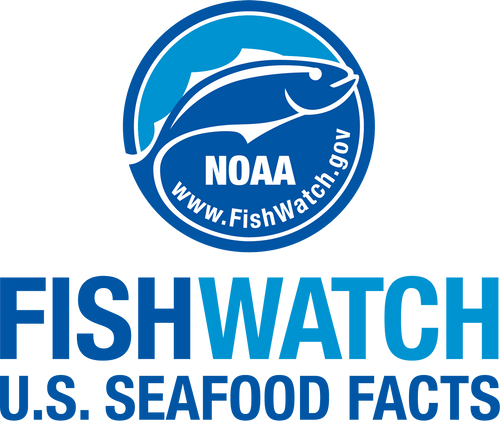 Blue mussel. Credit: Shutterstock
Blue mussel. Credit: Shutterstock
Blue mussel. Credit: Shutterstock
About the Species
 Blue mussel. Credit: Shutterstock
Blue mussel. Credit: Shutterstock
Blue mussel. Credit: Shutterstock
Blue mussels are economically and environmentally important filter-feeding bivalves. They are commonly harvested for food throughout the world, from both wild and farmed sources.
Appearance
- Range from 2 to 4 inches at maturity, though can grow up to 8 inches.
- The shell is black, blue-black or brown, teardrop shaped, and has concentric lines marking the outside; the inner shell is white.
- The ‘beard’ is the byssal threads allowing the mussel to attach to substrate.
Biology
- Are of the shellfish family. Like oysters, clams, and scallops, blue mussel are bivalve mollusks and have a hinged shell.
- Adults are sessile—they stay in one place—and inhabit both intertidal and subtidal areas.
- Have fast growth rates and high reproduction rates.
- First mature as males, then later develop female reproductive capabilities.
- Each female can produce between 50 and 200 million eggs during a spawning event.
Scientific Classification
| Kingdom | Animalia | Phylum | Mollusca | Class | Bivalvia | Order | Mytilida | Family | Mytilidae | Genus | Mytilus | Species | edulis |
|---|
Last updated by NOAA Fisheries on 09/06/2024
Featured News
 NOAA Fisheries Aquaculture staff discussing oyster farming strategies with stakeholders near Juneau, Alaska. Credit: NOAA Fisheries
NOAA Fisheries Aquaculture staff discussing oyster farming strategies with stakeholders near Juneau, Alaska. Credit: NOAA Fisheries
 A floating operations wharf with an oyster tumbler. Inside, workers remove barnacles from the oysters before they are graded and counted by an Oystek oyster grading machine. A solar-powered FLUPSY is attached to the wharf. During the 2024 Northeast Aquaculture Conference and Expo, Dale Leavitt, formerly of Roger Williams University, led a tour of Blue Stream Shellfish, which has been expanding in Fairhaven, Massachusetts. Credit: Lynn Fantom
A floating operations wharf with an oyster tumbler. Inside, workers remove barnacles from the oysters before they are graded and counted by an Oystek oyster grading machine. A solar-powered FLUPSY is attached to the wharf. During the 2024 Northeast Aquaculture Conference and Expo, Dale Leavitt, formerly of Roger Williams University, led a tour of Blue Stream Shellfish, which has been expanding in Fairhaven, Massachusetts. Credit: Lynn Fantom
 Oysters being farmed by Alaska Shellfish Farms in Kachemak Bay, Alaska. Credit: NOAA Fisheries
Oysters being farmed by Alaska Shellfish Farms in Kachemak Bay, Alaska. Credit: NOAA Fisheries
Seafood Facts

Are Blue Mussels Sustainable?
U.S. farmed blue mussels are a smart seafood choice because they are sustainably grown and harvested under U.S. state and federal regulations.
Availability
Available year-round.
Source
Tidal areas or offshore, mostly in New England, Washington, and California.
Taste
Tender meat and sweet flavor.
Health Benefits
Mussels are low in saturated fat and excellent sources of omega-3 fatty acids.
Nutrition Facts
Servings: 1; Serving Weight: n/a; Calories: 86; Protein: 11.9 g; Total Fat: 2.24 g; Total Saturated Fatty Acids: 0.4 g; Carbohydrate: 0 g; Total Sugars: 0 g; Total Dietary Fiber: 0 g; Cholesterol: 28 mg; Sodium: 286 mgLast updated by NOAA Fisheries on 09/06/2024
Seafood News
 A signboard thanking patrons at Tuna Harbor Dockside Market in San Diego. Credit: Tuna Harbor Dockside Market.
A signboard thanking patrons at Tuna Harbor Dockside Market in San Diego. Credit: Tuna Harbor Dockside Market.
 Credit: NOAA Fisheries/Brianna Shaughnessy
Credit: NOAA Fisheries/Brianna Shaughnessy
 An oyster reef with lush greenery in the background. Credit: Adobe Stock
An oyster reef with lush greenery in the background. Credit: Adobe Stock
Last updated by NOAA Fisheries on 09/06/2024
Last updated by NOAA Fisheries on 09/06/2024
Aquaculture
U.S. farmed blue mussels are a smart seafood choice because they are sustainably grown and harvested under U.S. state and federal regulations.

Environmental Impact
Mussels provide net environmental benefits by removing excess nutrients and improving water quality.

Feeds
Growing mussels requires no feed–they filter phytoplankton directly from the water column.

Farming Methods
Mussels can be grown in tidal areas or the open ocean. They can be grown directly on the beach bottom or suspended in the water column.

Human Health
Shellfish toxins and bacteria occur naturally in the environment and can cause food-borne illnesses. State and federal regulations require monitoring of farmed mussels to ensure they are safe to eat.
Management
- Permitting for shellfish aquaculture is governed by federal, state, and local governments.
- The federal agencies involved are NOAA, the Army Corps of Engineers, U.S. Fish & Wildlife Service, U.S. Department of Agriculture, the Environmental Protection Agency, the Food and Drug Administration, the Bureau of Ocean Energy Management, and the Coast Guard.
- Information on shellfish aquaculture permitting can be found in the Shellfish Growers Guide (PDF, 10 pages).
- A variety of shellfish aquaculture tools, including maps and models, are available to coastal managers.
- All fisheries and aquaculture farms in federal waters must adhere to federal regulations including those in the Magnuson-Stevens Fishery Conservation & Management Act, the Endangered Species Act, the National Environmental Policy Act, the Clean Water Act, and the Marine Mammal Protection Act.
Farming Methods
- Farmers collect larval mussels (spat) from wild populations.
- Mature mussel grow-out:
- On-bottom – mussels are seeded on sea bottom to form beds.
- Off-bottom – mussels are grown in the water column using longline (rope), raft or bouchot methods (on ropes wrapped around marine pilings or poles).
Production
- In 2016, the United States produced 894,000 pounds of mussels valued at $10.48 million.
Environmental Considerations
- Habitat:
- Mussel farming has a benign ecological footprint, with little disturbance of sediments or aquatic vegetation during grow-out.
- Some mussel harvesting methods involve dredging, but long-term effects on the environment are rare.
- Feeds:
- Mussels do not need to be fed because they filter their food from the water column.
Ecosystem Services
- Water quality improvements:
- Mussels are filter-feeders, removing algae, organic matter and excess nutrients from the water column as they grow and improving water quality.
- When mussels are harvested, excess nutrients, such as nitrogen and phosphorus, are removed from the ecosystem.
- Providing habitat:
- Mussels and the gear used to farm them provide habitat for marine organisms.
- Mussel beds stabilize coastal sediments and help minimize impacts from storm surges.
Human Health
- Shellfish toxins:
- Shellfish poisoning is an illness that can occur from eating contaminated shellfish.
- Shellfish can assimilate the toxins that cause shellfish poisoning from the algae on which they feed.
- Early warning systems exist to detect harmful algal blooms that produce toxins.
- New technologies, such as the Environmental Sample Processor, provide near real-time detection of harmful algal species.
- For more information on the prevention and monitoring of harmful algal blooms, read about NOAA's Harmful Algal Bloom forecasting program.
- Pathogenic bacteria:
- The bacteria Vibrio parahaemolyticus (Vp) and Vibrio vulnificus (Vv) occur naturally in the environment and can cause food-borne illness from consuming raw shellfish.
- Ingestion of undercooked or raw shellfish with Vp or Vv can lead to gastrointestinal illness.
- Public health officials monitor shellfish from growing areas to ensure they are safe to eat.
More Information
Last updated by NOAA Fisheries on 09/06/2024
Science Overview
- Growth and reproduction:
- The Northeast Fisheries Science Center’s Milford Lab is conducting research on the ability of mussels to improve coastal water quality.
- NOAA, New Hampshire Sea Grant, and the University of New Hampshire worked with the Portsmouth Commercial Fisherman’s Association to show that growing mussels alongside steelhead trout and sugar kelp results in net water quality improvement.
- Ocean acidification:
- Acidification causes a number of changes in water chemistry that may be stressful to shellfish.
- Ocean acidification and its impacts on shellfish are being investigated by NOAA and other labs. For more information, visit NOAA’s Ocean Acidification Program.
More Information
Last updated by NOAA Fisheries on 09/06/2024
Documents
Alaska Mariculture Workshop Summary Report
Summary of a multi-day aquaculture workshop with more than 60 mariculture development stakeholders…
Research
Fisheries Ecology in the Northeast
We study the relationship between marine life and their environment to support sustainable wild and farmed fisheries on the Northeast shelf, creating opportunities and benefits for the economy and ecosystem.
Current Research at Milford Laboratory
We develop probiotics for use in oyster hatcheries and perform studies in aquaculture gear as habitat for marine life, nutrient bioextraction studies, shellfish genetics research, offshore shellfish aquaculture potential, and shellfish responses to ocean…
Outreach & Education
Fisheries of the Northeast
More than 100 species, including finfish, shellfish, urchins, and seaweeds, are landed in the…
Last updated by NOAA Fisheries on 09/06/2024





